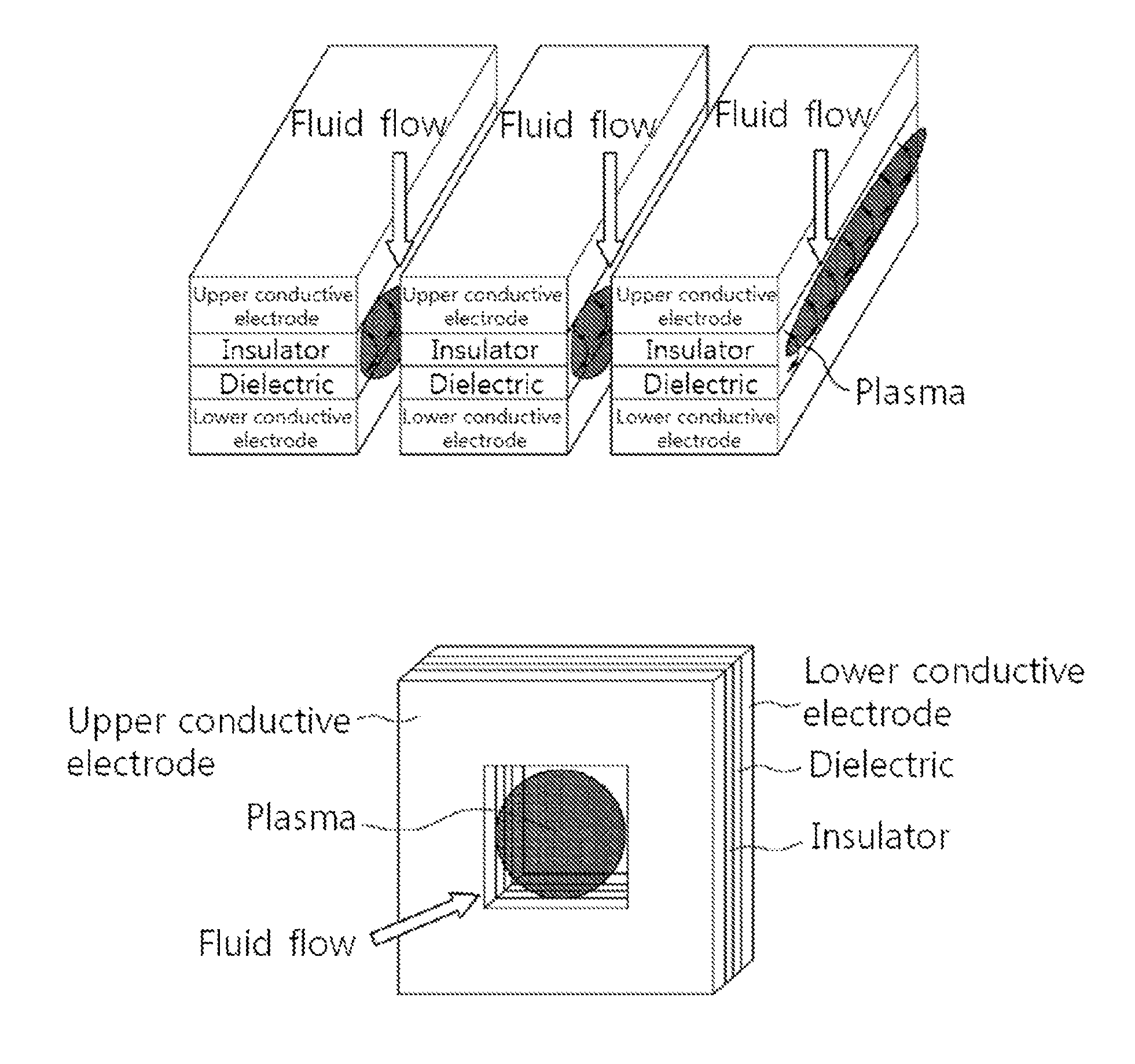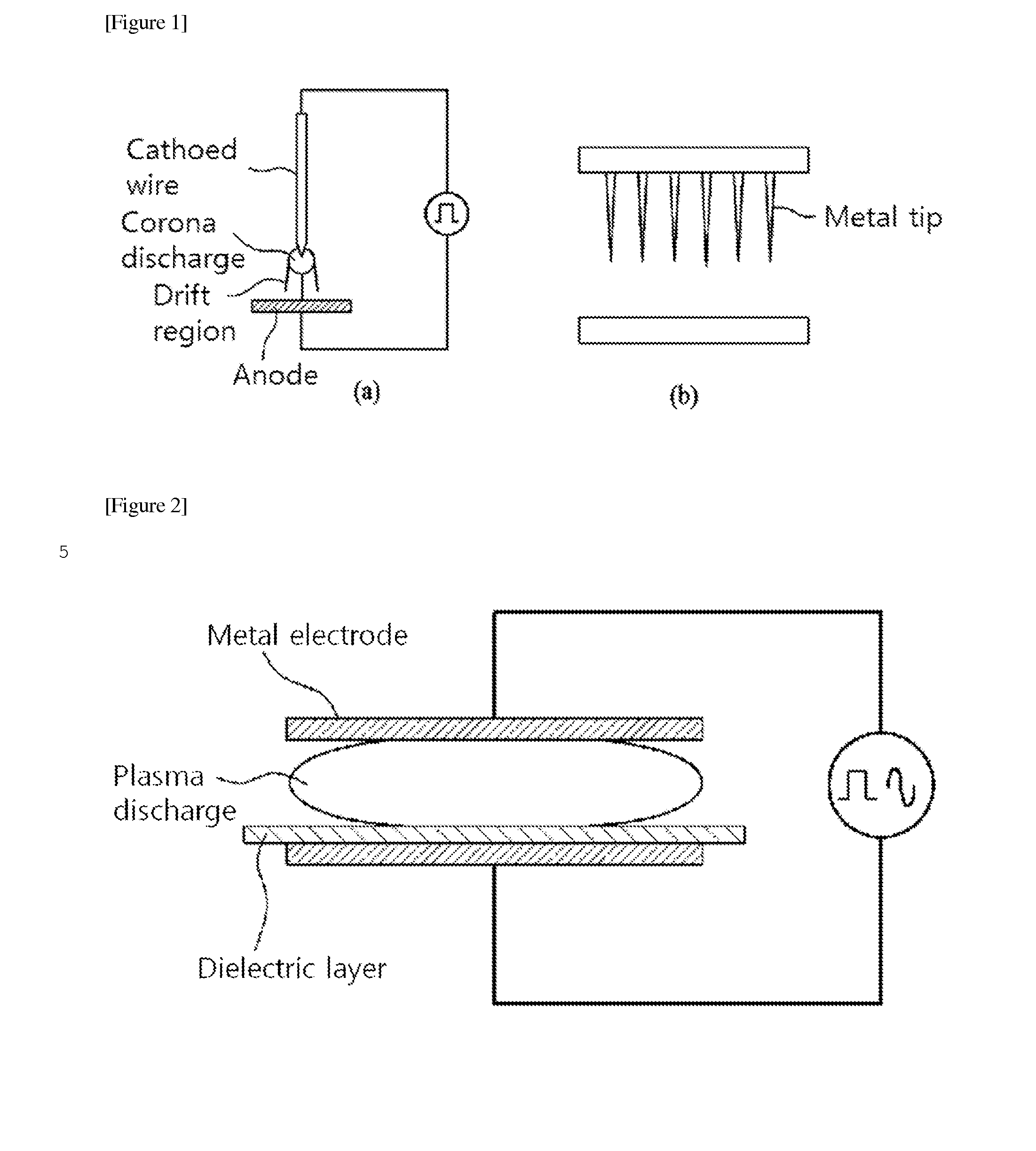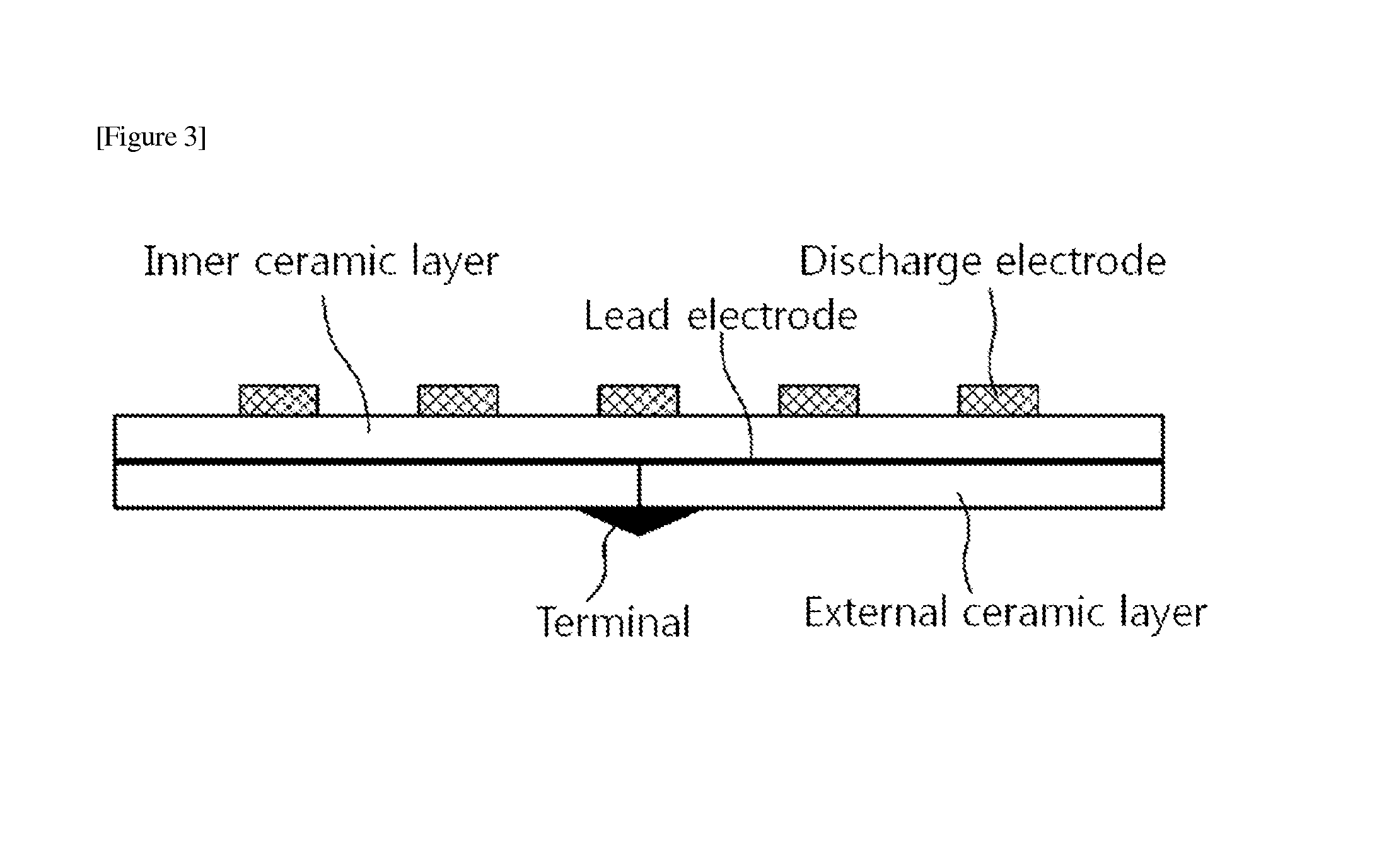Dielectric barrier discharge-type electrode structure for generating plasma having conductive body protrusion on electrodes
a technology of conductive body and electrode structure, which is applied in the direction of discharge tube main electrodes, corona discharge, separation processes, etc., can solve the problems of long lifespan, short lifespan of anions, and long lifespan of anions, so as to achieve excellent plasma efficiency, long lifespan, and less noise
- Summary
- Abstract
- Description
- Claims
- Application Information
AI Technical Summary
Benefits of technology
Problems solved by technology
Method used
Image
Examples
example 1
[0142]In order to evaluate the performance of a plasma electrode structure, an air cleaning module comprising a fluid inlet, a plasma electrode, and a fluid outlet was used. An electrical electrode was made of stainless steel 403 with a circular plate shape having a diameter of 50 mm and a thickness of 1 mm. Then, five electrode protrusions were formed on the outer periphery of the diameter of the plate at a uniform angle and a height of 50 μm using a press, and five protrusions were formed in the center of the radius in the same manner. Moreover, forty eight circular through holes having a diameter of 3.6 mm were uniformly distributed on the plate. The opening area corresponds to 25% of the whole area. Then, a dielectric layer was formed with a thickness of 70 μm on a circular metal plate by a typical spraying process using alumina and barium titanate powders having a particle size of 1-2 um as a dielectric composition and polyvinylidene fluoride (PVDF) as a binder, and another cir...
example 2
[0145]The electric energy applied to the electrode, i.e., the number of anions generated with an increase in pulse width was measured and shown in FIG. 14. As shown in FIG. 14, it can be seen that the number of anions generated with an increase in pulse width was rapidly increased, and the number of anions was close to 1 million per cubic centimeter as the pulse width was close to 100 μs.
PUM
 Login to View More
Login to View More Abstract
Description
Claims
Application Information
 Login to View More
Login to View More - R&D
- Intellectual Property
- Life Sciences
- Materials
- Tech Scout
- Unparalleled Data Quality
- Higher Quality Content
- 60% Fewer Hallucinations
Browse by: Latest US Patents, China's latest patents, Technical Efficacy Thesaurus, Application Domain, Technology Topic, Popular Technical Reports.
© 2025 PatSnap. All rights reserved.Legal|Privacy policy|Modern Slavery Act Transparency Statement|Sitemap|About US| Contact US: help@patsnap.com



